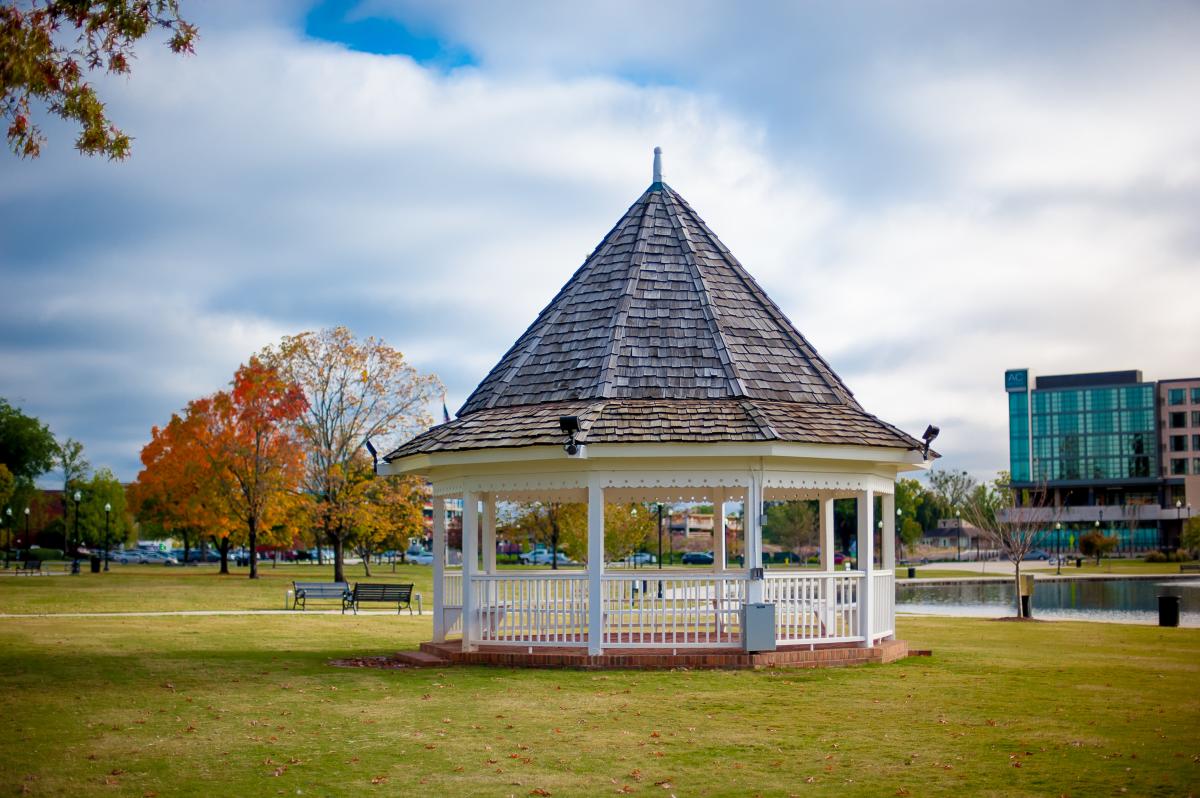
More than 200 years ago, future U.S. Senator John Williams Walker remarked that “Huntsville is situated around the finest spring in the world,” and two centuries later, it’s still true. Huntsville’s Big Spring Park is located at the heart of the city, just off the courthouse square, and will always be near and dear to the hearts of Huntsvillians.
The Birthplace of Huntsville

Back in 1805, Revolutionary War veteran John Hunt chose Big Spring as the location for a new community – the 7 to 20 million gallons of fresh water the spring produces every day were an invaluable resource for the new town. Before it was Huntsville, the community was called “Hunt’s Spring,” in honor of the two ingredients on which it was started. Hunt built the first cabin in what would become Huntsville atop the bluff by the spring. It would be the better part of a century before Big Spring became part of Big Spring Park; the U.S. Army Corps of Engineers renovated the site of the spring beginning in 1898, under the leadership of Hiram Chittenden, who had just been involved in the early development of Yellowstone National Park.
A Man, a Plan, a Canal: Big Spring

The park gets its name from the Big Spring, but the spring itself can be easy to overlook, tucked away in a corner of the park. Much harder to miss is the canal that runs through the park, the Indian Creek Canal. Indian Creek is the first canal in the state of Alabama; begun the year after the state was formed in 1819, and completed in 1830. The canal connects the spring with the Tennessee River, 10 miles to the south, and was constructed to support the shipping of cotton. From a race to a restaurant, the name “Cotton Row” is part of Huntsville’s culture; it stems from the cotton trade that took place alongside the courthouse square. Indian Creek Canal allowed cotton to be transported much more easily from Cotton Row to the Tennessee River, from whence the entire world could be reached via the Ohio River to the Mississippi, to the Gulf of Mexico and beyond.
More Than Just A Park

Over the years, Big Spring has been home to a variety of attractions, activities and even utilities. In 1823, Huntsville developed the nation’s first public water system west of the Appalachian mountains, with Big Spring as its water source. Community baptisms were held at Big Spring Park, dating back to at least the late 1800s. In the mid-1960s, amusement park rides were set up in Big Spring Park. Big Spring was also a filming location for the movie Constellation, which starred Billy Dee Williams and Zoe Saldana.
Around the World in a Park

Informally, the park is just “Big Spring.” You’ll often hear it called “Big Spring Park.” But for formal occasions, use its full name – “Big Spring International Park.” International Park? That’s right – Big Spring is more than a great place to hang out and feed fish and ducks, it’s practically a low-key EPCOT of treasures from around the world. Wander through the park, and you’ll find a bench from the United Kingdom, a sundial from Germany, and, most distinctively, the iconic cherry trees and red bridge from Japan. You’ll also find geese from Canada, but they weren’t really a gift.




